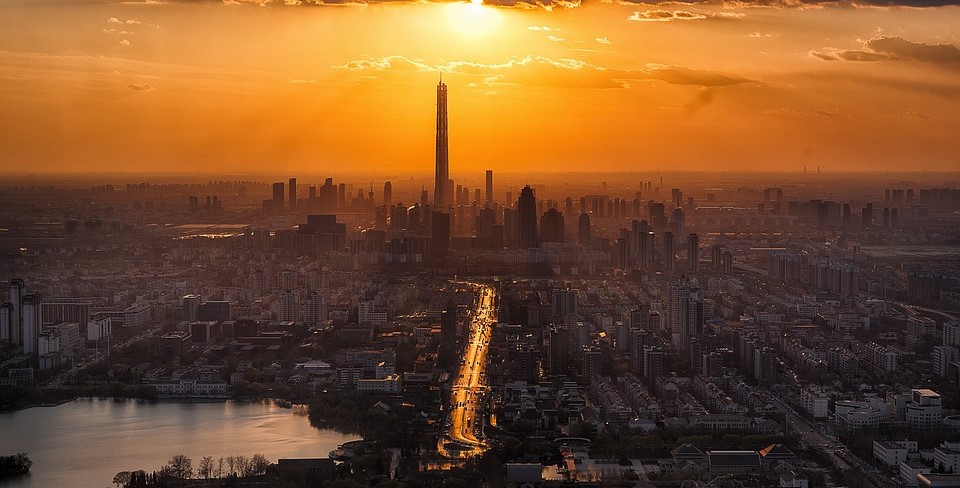Living in a constant rush, traffic congestion, crowded public transportation during rush hour. Sounds familiar? For those who live in the city, some of these problems are so “everyday” that they are not considered problems, we think “this is how it is in the city.” Are we sure this is how everyday life must look like?
The idea of planning a “resident-friendly” city was the motivation of Professor Carlos Moreno, who in 2016 introduced the term 15-minute city [1]. He defined in this way a city model and urban planning theory, which assumes that everyone living in a city should be able to get to places of daily use in a maximum of 15 minutes on foot or by bicycle.
Nowadays, cities face many problems. One of the factors that dramatically changed city planning was the increase in the use of cars. They have contributed to a change in the approach to space planning, more spaces have been allocated for parking lots, and traveling longer distances to run daily errands was no longer such an obstacle. The availability of cars and their number in cities, has led to a negative impact on biodiversity, but is also associated with negative effects such as traffic jams, which, in addition to psychological and social consequences, also bring time and economic losses [3]. It is estimated that drivers driving through the seven largest cities in Poland lose as much as 3.8 billion zlotys a year due to traffic jams [5].
A significant push on the journey towards sustainable city planning was undoubtedly the Covid-19 pandemic. Restrictions forced society to adapt to the new rules, implementing innovative solutions that allowed, with precaution and health protection, to perform daily activities [2].
The idea of the 15-minute city is based on the observation that the quality of life decreases as the time people spend in transportation increases. The basic functions to be fulfilled by a city include (a) housing, (b) work, (c) commerce, (d) health care, (e) education and (f) entertainment, and in this model the fulfillment of these functions should be accessible to residents. To ensure this, there is a need to restructure the urban landscape so that cities offer infrastructure that provides a higher quality of life [2].
As the popularity of the 15-minute city idea grows, more and more architects and stakeholders have become interested in the topic. One example of the implementation of the idea is a plan by Paris mayor Anne Hidalgo to turn the French capital into a “15-minute city”.
The “Les Parisculteurs project” is also intended to encourage residents to grow food locally. The main goal of the effort is still to arrange the infrastructure so that residents can easily get to school, work, stores or health centers [6]. TDJ Estate also had similar assumptions when designing the “Pierwsza Dzielnica” in Katowice, Poland. The project’s concept is to provide the neighborhood’s residents with spaces to accommodate stores and services. Instead of a lower price, TDJ Estate advertises its project as a multifunctional space with accessibility to places to run daily errands [4].
Good urban planning directly affects the quality of life of residents, affecting their well-being, cost of living, and health. To ensure a high quality of life, there is a need for convenient and relatively quick access to run daily errands. Over time, more and more people will live in cities, which is why sustainable and efficient city planning is so important, and the idea of a “15-minute city” may be the answer to some of the problems.
Bibliography:
- The Obel Award,15-MINUTE CITY AT A GLANCE, https://obelaward.org/the-15-minute-city/
- Moreno, C., Zaheer, A. Chabaud, D., Gall C., Pratlong F., Introducing the “15-Minute City”: Sustainability, Resilience and Place Identity in Future Post-Pandemic Cities
- Gössling, S. Why cities need to take road space from cars—And how this could be done. J. Urban Des. 2020, 25, 443–448. [Google Scholar] [CrossRef]
- 15-minutowe miasta zaczynają się także w Polsce, https://www.miasto2077.pl/15-minutowe-miasta-zaczynaja-sie-takze-w-polsce/
- Ile kosztują nas korki? Ranking najbardziej zatłoczonych miast w Polsce, Forsal, https://forsal.pl/artykuly/925644,koszty-korkow-drogowych-w-polsce-najbardziej-zakorkowane-miasta.html
- The “15-minute city”: how Paris is turning density and lack of space into a strength, Sustainable Urban Data 2022, https://sustainableurbandelta.com/15-minute-city-paris-urban-farms/
Joanna Rancew


